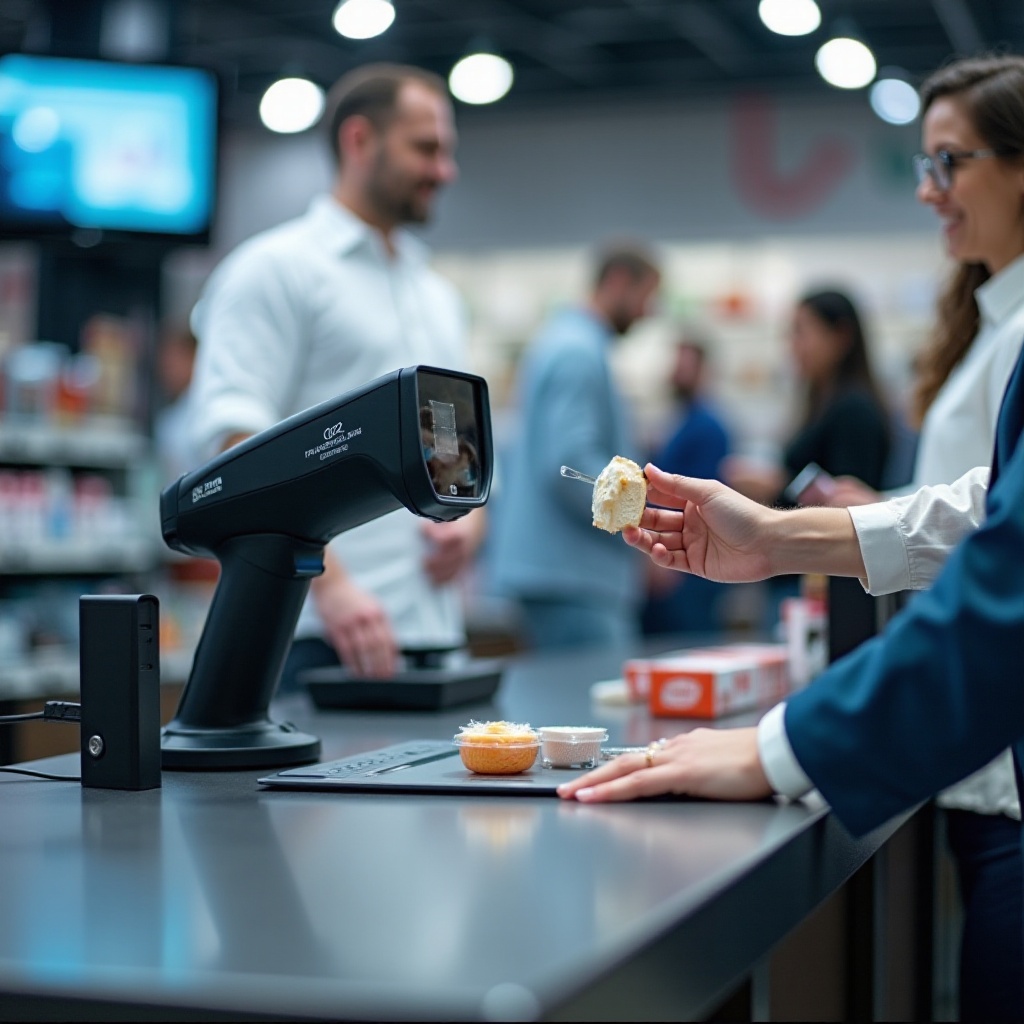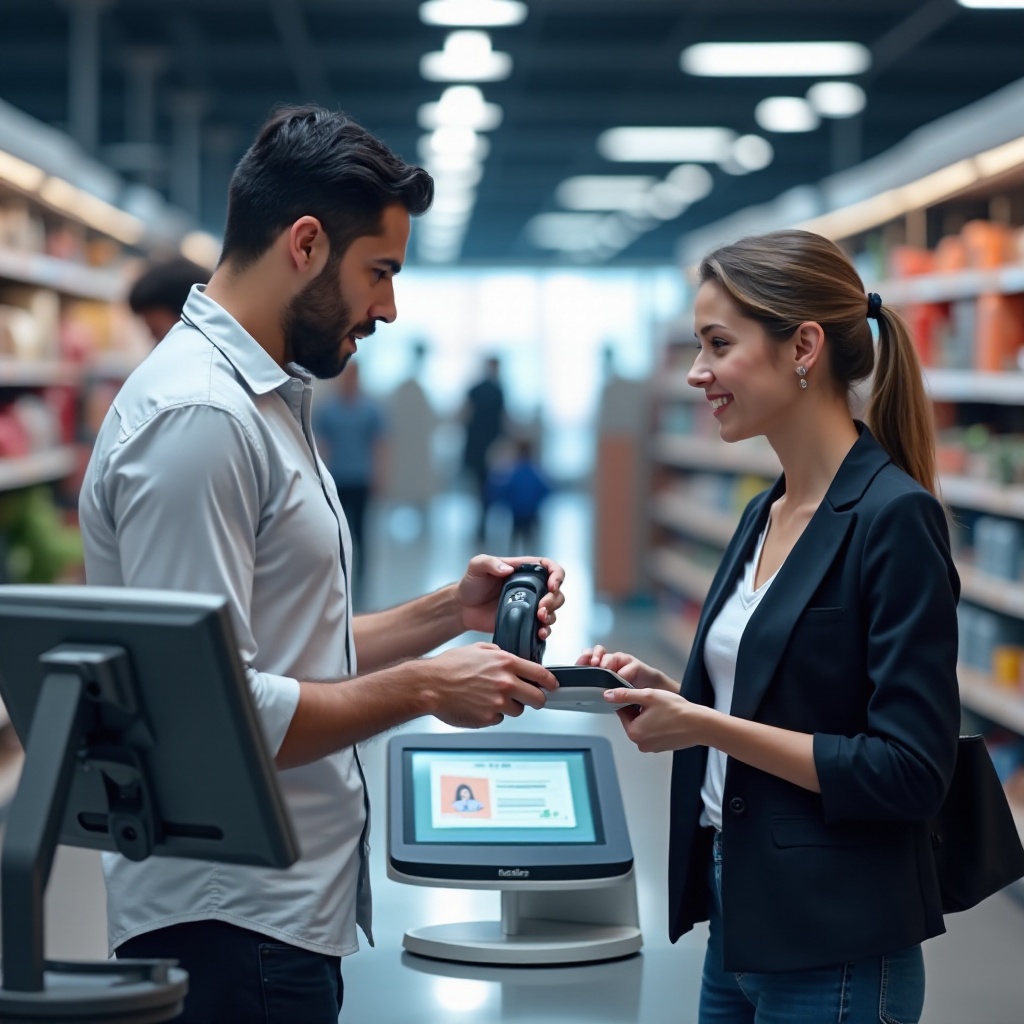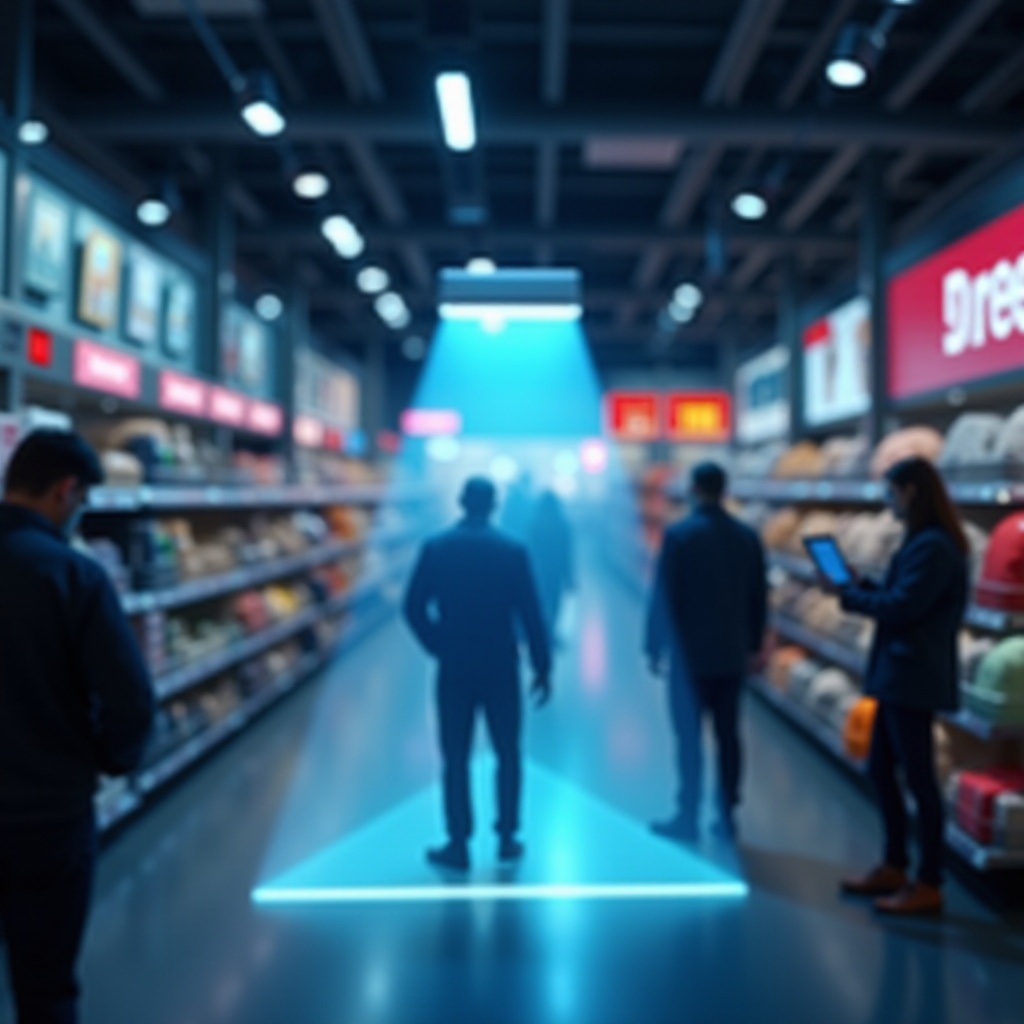Introduction
The retail industry faces an ongoing issue with theft, making the need for efficient loss prevention solutions more significant than ever. Scanners play a critical role in this aspect, identifying stolen items and maintaining the integrity of store inventories. This guide delves into the technology behind barcode and RFID scanners, real-time applications in theft detection, addressing challenges, and future trends. Let’s explore how scanners contribute to catching stolen items and improving retail security.

The Evolution of Retail Scanning Technology
Over the years, retail scanning technology has evolved significantly. Initially, manual methods of inventory checks and keeping tabs on sales dominated stores. However, these methods proved to be time-consuming and prone to human error. Retailers needed a more efficient approach to track inventory and prevent theft.
The introduction of barcode technology marked a significant leap forward. Barcodes simplified the process of managing products, tracking sales, and flagging discrepancies. As technology advanced, Radio Frequency Identification (RFID) emerged, offering more precise and versatile options for theft detection and inventory management.
The evolution of these technologies illustrates the industry’s growing need for sophisticated methods to combat theft and streamline operations.

The Technology Behind Barcode Scanners
Barcode scanners have become ubiquitous in the retail world. They rely on optical technology to read and interpret the coded information on product labels. The technology behind barcode scanners is fairly straightforward yet highly effective:
- Scanning: A barcode scanner emits a light source onto the barcode, typically using a laser or LED.
- Reading: The scanner detects the reflected light and translates the spaces and lines of the barcode into a digital signal.
- Decoding: The digital signal is then decoded into a readable format by the scanner’s internal software.
- Transmission: The decoded information is transmitted to a computer or point-of-sale (POS) system for further processing.
Barcodes provide essential data about the product, including its price and inventory status. By cross-referencing this data with sales records, retailers can quickly identify mismatches that may indicate theft.
The Rise of RFID Scanners
While barcodes revolutionized retail management, RFID technology took it a step further. RFID scanners use electromagnetic fields to automatically identify and track tags attached to products. Here’s how RFID works in layman’s terms:
- Tagging: Items are equipped with RFID tags containing stored data, such as product details and inventory status.
- Reading: RFID readers emit radio waves that activate the tags. Each tag responds with a unique signal, which the reader captures.
- Processing: The reader sends the captured information to a central database for analysis and tracking.
RFID technology provides several advantages over traditional barcodes:
- Enhanced Accuracy: RFID can capture data on multiple items simultaneously, reducing errors and improving efficiency.
- Real-Time Tracking: RFID enables real-time monitoring of inventory, making it easier to pinpoint discrepancies.
- Reduced Shrinkage: The technology provides robust anti-theft features by detecting unauthorized tag removals.
The rise of RFID scanners represents a substantial leap in the fight against retail theft.
Real-Time Applications in Theft Detection
Effective theft detection relies on the seamless integration of technology into everyday retail operations. Scanners are integral to this process, offering real-time applications that help mitigate losses.
Inventory Tracking Systems
Both barcode and RFID scanners play a pivotal role in inventory management systems. They ensure that stock levels are accurate and up-to-date. By automatically recording each item’s movement, retailers can quickly identify when a product goes missing, flagging it for investigation.
Integrated Anti-Theft Systems
Modern retail environments often incorporate comprehensive anti-theft systems that utilize scanners. These systems combine surveillance cameras, electronic article surveillance (EAS) tags, and scanner data to create a fortified security network. When an item is scanned at the register, the EAS tag is deactivated. If someone attempts to leave the store without scanning the item, alarms are triggered.
Retail Chain Case Studies
Real-world applications of these systems can be seen in major retail chains. For instance, Walmart and Target extensively use RFID technology for inventory control and theft prevention. These retailers report significant reductions in shrinkage and improvements in inventory accuracy, showcasing the efficacy of advanced scanner technologies in large-scale operations.

Addressing Challenges and Limitations
Despite their benefits, scanners do have challenges and limitations. For example, barcode scanners rely on the visibility and condition of the barcode label. Damaged or poorly printed barcodes can lead to errors.
RFID technology, while more advanced, is not without its drawbacks. The initial setup costs can be prohibitive for small businesses. Additionally, there are concerns about electronic interference and the need for precise tag placement to ensure accurate reading.
Data security is another critical issue. With the capability of RFID to track items in real-time, there are concerns about the potential misuse of data and invasion of privacy. Retailers must implement robust security measures to protect customer and inventory information.
Addressing these challenges is vital for the continued advancement and acceptance of scanning technology in retail settings.
Future Trends in Scanner Technology
Looking ahead, the future of scanner technology in retail promises exciting developments. Here are a few trends to watch for:
- Enhanced Machine Learning Algorithms: Integration of better machine learning models can improve the accuracy and efficiency of theft detection systems.
- Blockchain for Supply Chain Transparency: Incorporating blockchain technology could enhance the security and transparency of inventory tracking.
- IoT and Smart Shelves: Internet of Things (IoT) technology in smart shelves can automatically track inventory levels and detect theft in real-time, enhancing the scanning technology’s effectiveness.
- Mobile Scanners: The adoption of mobile scanner apps can enable retailers to conduct inventory checks and theft detection more flexibly and efficiently.
These trends indicate a future where scanner technology becomes even more integrated, sophisticated, and effective in preventing retail theft.
Conclusion
Scanners are indispensable tools in the retail industry’s fight against theft. From barcodes to RFID technology, these systems provide accurate, efficient, and reliable methods for tracking inventory and detecting stolen items. While challenges remain, the ongoing advancements in scanning technology promise a future where theft prevention becomes seamless and more effective.
Frequently Asked Questions
How effective are scanners in preventing theft?
Scanners are highly effective in preventing theft by providing real-time inventory tracking and integration with anti-theft systems. They can quickly identify discrepancies, alerting store personnel to potential theft.
What are the main types of scanners used in retail?
The two main types of scanners used in retail are barcode scanners and RFID scanners. Barcode scanners read optical codes, while RFID scanners use radio waves to track items.
Can scanner technology infringe on customer privacy?
While RFID technology can raise privacy concerns due to its ability to track items in real-time, robust security measures and regulations ensure the protection of customer data. Retailers must adhere to privacy guidelines to prevent misuse.

